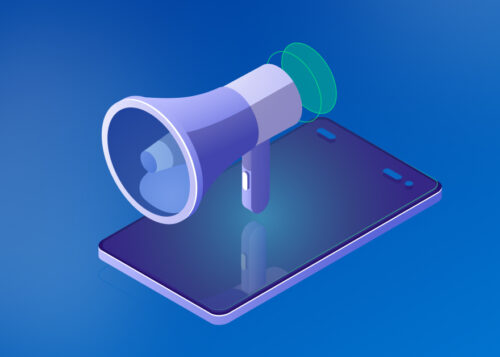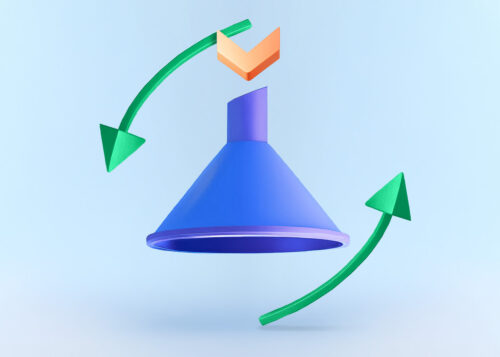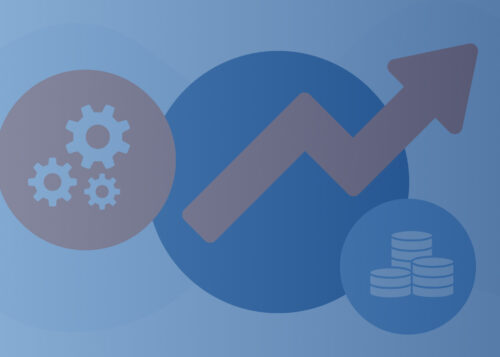Why your marketing campaigns need an SDR from day one

For years, SDRs have been brought into marketing campaigns as a final step in the funnel—handed a list of MQLs and tasked with turning interest into action.
That model might check a few boxes, but it misses the bigger picture.
In today’s B2B landscape, alignment between marketing and sales isn’t just a buzzword—it’s a revenue strategy. And bringing SDRs into the campaign process from day one is the key to making that alignment real, measurable, and effective.
If your campaign’s goal is pipeline—not just performance marketing KPIs—you need your SDR team plugged in from the start.
Why marketing and sales alignment really matters
Marketing campaigns are often built to generate demand—but campaign success isn’t just about generating demand. It’s about converting that demand into revenue.
And that’s where traditional alignment often falls short. Without a tight, integrated feedback loop between marketing and SDRs:
- Leads sit too long before outreach.
- Follow-up lacks relevance because it’s disconnected from the campaign that drove engagement.
- Sales reps are handed leads that aren’t truly qualified or timely.
By embedding SDRs into the planning and execution of your marketing efforts, you build a connected engine where demand gen, qualification, and conversion work together seamlessly—not in sequence.
The SDR’s role: Not just follow-up, full-funnel impact
SDRs have evolved far beyond the post-campaign “lead chaser.” They are strategic players that sit at the intersection of marketing insights and sales execution. When integrated early, they help ensure that:
- Real-time insights shape the campaign: SDRs surface patterns in engagement, objections, and buying behavior that inform content, targeting, and messaging.
- Lead quality improves: SDRs can identify bad-fit leads quickly, helping marketing tighten audience focus and eliminate wasted effort.
- No engagement goes to waste: With SDRs following up on high-intent activity the moment it happens, every meaningful interaction has a path forward.
- Marketing and sales speak the same language: SDRs help translate marketing messaging into sales conversations and vice versa—creating a feedback loop that sharpens both.
In short: SDRs are the bridge—but the bridge goes both ways. Their insight makes marketing smarter, and marketing gives SDRs the tools to personalize and act fast.
Tapping into shared intelligence and intent data
Modern marketing teams have access to powerful platforms like 6sense, Bombora, and Demandbase that surface account-level intent and engagement data. But this data isn’t magic—it only works if someone acts on it.
When SDRs are involved in the campaign early, they become the team that turns intent into action. They can:
- Prioritize outreach based on real-time website behavior and campaign engagement.
- Give feedback on which signals actually correlate with readiness to buy—helping refine lead scoring models.
- Identify gaps in targeting and suggest new audiences or messaging adjustments based on direct conversations.
And perhaps most importantly, SDRs can influence inbound behavior through outbound action.
An SDR’s personalized email might drive a site visit. That site visit might lead to a whitepaper download. That download triggers a retargeting ad. Suddenly, a cold lead looks like an inbound one—and SDR engagement becomes the true attribution source.
This outbound-to-inbound motion becomes even more effective when marketing and SDRs are actively sharing intelligence—not just logging it.
The ROI of adding an SDR to your marketing campaigns
When SDRs are brought into a marketing campaign from the beginning—not just looped in once leads start flowing—teams consistently see stronger, faster, and more efficient outcomes.
1. More pipeline, faster
With an SDR actively qualifying and nurturing leads from the start, the time between lead generation and opportunity creation shrinks.
Instead of waiting for a lead to reach a specific threshold before outreach, SDRs can engage much earlier—leading to faster pipeline movement.
2. Higher lead-to-opportunity conversion
Leads nurtured by an SDR who understands campaign context convert at a higher rate—because the outreach is timely, relevant, and personalized.
- Fewer wasted sales cycles on bad-fit leads.
- More engaged prospects who have already been nurtured by SDRs.
- A higher percentage of marketing-driven leads turning into real opportunities.
3. Faster deal velocity
When SDRs are integrated into a campaign from day one, they provide ongoing insights that help marketing teams improve campaign performance in real time.
Instead of running a campaign, analyzing it after completion, and then making adjustments for the next cycle, companies can iterate on the fly—leading to:
- Improved messaging and targeting mid-campaign.
- More efficient allocation of ad spend and marketing resources.
- A higher overall ROI on marketing investments.
4. Less pipeline leakage
SDRs give otherwise passive leads a human touch, rescuing them from being buried in automation flows and instead routing them toward live conversations.
5. Smarter campaign optimization
With SDRs providing real-time intel on what’s landing (and what isn’t), marketing can adjust campaign levers mid-flight—rather than post-mortem.
How to embed SDRs in your marketing campaigns
If your goal is pipeline and revenue—not just leads—it’s time to rethink your campaign process. Here’s how to get started:
1. Start with shared goals
Align on what success looks like. Go beyond MQLs and measure campaign impact in meetings booked, pipeline created, and velocity improved.
- What constitutes a Marketing Qualified Lead (MQL) vs. a Sales Qualified Lead (SQL)?
- How quickly should SDRs engage with leads?
- What feedback loops will be established to refine lead scoring?
2. Involve SDRs early
Treat them as stakeholders in campaign planning. Ask for their input on persona pain points, common objections, and content ideas that resonate.
Have SDRs provide input on:
- The types of messaging and offers that resonate with prospects.
- Common objections they encounter during outreach.
- The best ways to structure follow-up sequences.
3. Give SDRs full visibility
Make sure they know what messaging leads have seen, which content they’ve engaged with, and what signals they’ve triggered.
Ensure that SDRs have direct access to campaign insights by:
- Giving them visibility into intent data and lead activity.
- Equipping them with campaign assets (e.g., content pieces, email templates) to personalize outreach.
- Setting up real-time collaboration channels between marketing and SDRs to share insights.
4. Build structured feedback loops
Create regular touchpoints between marketing and SDRs to share what’s working, flag quality issues, and iterate on the fly.
- Are leads from this campaign converting at a higher rate?
- What feedback are SDRs providing about lead quality?
- How can marketing refine targeting, messaging, or nurture strategies based on SDR engagement?
SDRs + marketing: the campaign alignment that actually drives revenue
The best campaigns don’t stop at clicks and form fills. They create conversations. They accelerate sales cycles. And they generate revenue—not just engagement.
That kind of performance requires a truly integrated approach.
When SDRs are embedded into marketing campaigns from day one, you unlock:
- Higher quality leads
- Faster movement to pipeline
- More meaningful sales conversations
- Better campaign iteration
- Stronger attribution and insight
It’s not just alignment—it’s cohesion. And it’s how modern teams are building more predictable, scalable revenue engines.
Ready to take your campaigns from lead gen to pipeline creation?
Let’s talk about how demandDrive helps B2B teams put SDRs at the heart of demand generation.
Related Resources
Continue exploring

Top 10 Trends for SaaS Sales and Marketing Leaders to Watch in 2025

Turn LinkedIn users into qualified leads with Conversation Ads

Driving High-Value Engagement with Account-Based Marketing (ABM)

demandDrive Surges into the Future of Integrated Sales and Marketing with New Brand Identity

GTM Alignment & Collaboration

How You Can (And Should) Adapt Your Revenue Development Strategies in Response to Market Trends




